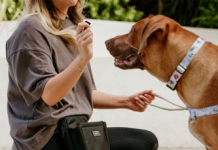Canine Parvovirus, or CPV, is an infection that is highly contagious. While it is usually seen in younger dogs, adult dogs can also be susceptible.
What are the symptoms and types of Parvovirus and how can you treat it successfully? Here are some tips to help you spot the signs early and get your dog treated quickly.
Types of Parvo
There are two types of Parvo, one with which you’re most familiar and another that’s less common.
The more common form is an intestinal virus and is characterized by vomiting, diarrhea and weight loss leading to lack of appetite.
The less common and more dangerous form, is the one that attacks the heart muscles of young puppies and can kill them. This type of Parvo is usually seen in puppies between the ages of six weeks in six months and, fortunately, vaccinations have helped eradicate it for the most part.
Symptoms
With intestinal Parvo, your dog could run a fever, have some bloody diarrhea and feel very lethargic. The reason for this is dehydration and loss of nutrients. Another symptom of intestinal Parvo is a rapid heartbeat which you can feel by placing your hand on her chest.
What Causes It?
Most cases of these infections come from a genetic alteration of the original Parvovirus, and the pathways to infection are many.
Dogs can also contract Parvo either by direct contact with an infected dog or by eating the feces of an infected dog. It can also be brought into your dog’s environment if someone steps on the feces of an infected dog and the remnants are on their shoe. Sadly, Parvo can live in the soil outside for up to a year and, if you find that Parvo has come into your house, the only way to combat it is with bleach.
Treatment and Management
There is no cure to Parvo, just management. The only way to manage it is to cure the symptoms and do your best to prevent secondary infections. The survival rate in dogs is about 70% but some do die from severe dehydration or a secondary bacterial infection.
Even with recovery, you will still need to keep an eye on your dog because she could have a weakened immune system and be susceptible to other illnesses.
The best prevention is vaccination. Young puppies should be vaccinated at six, nine and 12 weeks and you should keep socialization with outside dogs until two weeks past their vaccination dates.
Photo Credit: istockphoto.com











